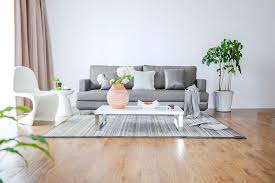When living in compact homes, managing space effectively is essential. Whether you reside in a small house or a cozy apartment, maximizing every square inch is key to making your living space more functional, organized, and visually appealing. With smart remodeling techniques, you can transform even the smallest homes into efficient and stylish environments. Below are some clever remodeling ideas to help you make the most of your compact home.
Transform Your Home with an Open Floor Plan: Create Space and Flow
A great way to make a small space feel larger is by adopting an open floor plan. By removing non-essential walls between the kitchen, living room, or dining area, you can bring in more natural light and create better flow throughout your home. An open floor plan not only increases the perceived size of your living area but also gives you the flexibility to rearrange furniture and make the most of the space you have. If you’re considering remodeling, tearing down barriers between rooms is a smart way to create a seamless and airy atmosphere in your home.
Maximize Your Space: Utilize Vertical Storage for a Clutter-Free Home
In a compact home, it’s important to use every bit of available space, including vertical areas. When planning a remodel, think about how you can incorporate storage solutions that take advantage of wall space. Built-in shelving, floating cabinets, or wall-mounted storage units can help you store more without taking up valuable floor space. Using your walls for storage will keep the ground area clear and uncluttered, making the room feel bigger. Consider adding tall bookcases, wall-mounted TVs, or overhead cabinets to optimize your storage and maintain a clean, organized look.
Maximize Functionality: Smart Multifunctional Furniture for Compact Homes
Multifunctional furniture is a key solution for maximizing space in smaller homes. A built-in bench with hidden storage, a coffee table that doubles as a storage chest, or a sofa bed that can also serve as a guest bed are excellent choices. These pieces allow you to use your space for multiple purposes, reducing the need for extra furniture. Custom-built furniture, such as fitted wardrobes, corner shelves, or storage units for alcoves or under-the-stairs spaces, are also great ways to make the most of awkward or underutilized areas in your home.
Create the Illusion of Space: Use Mirrors and Glass for an Open, Airy Home
Mirrors and glass elements are classic tricks for making small spaces feel larger. Mirrors reflect light, which creates the illusion of depth and openness. By placing a large mirror on a key wall or incorporating mirrored furniture, you can instantly make your home feel more expansive. Similarly, glass partitions or doors allow light to flow freely throughout the space, adding to the sense of openness. Glass shower enclosures, tabletops, or doors are great options for achieving this effect while maintaining a modern, sleek look.
Brighten Your Space: How Light Colors Can Make Small Rooms Feel Larger
The colors you choose for your home play a big role in how spacious it feels. Lighter shades like white, soft gray, or pale blue can make rooms feel bigger and more inviting. In contrast, darker colors absorb light and can make a space feel more closed in. When remodeling a small home, consider using lighter tones on walls, ceilings, and large furniture pieces. You can still introduce pops of color through accessories, artwork, or textiles to add character without overwhelming the space.
Let the Light In: Harness Natural Light to Make Small Spaces Feel Bigger
Natural light is one of the most effective ways to make a small space feel bigger. Large windows, skylights, and glass doors can bring in plenty of natural light, making your home feel more open and airy. If your home has limited windows, you might want to consider remodeling projects that involve adding or expanding windows. Additionally, make sure your existing windows are not blocked by heavy drapes or furniture to maximize the amount of light entering your space.
Conclusion
Maximizing small spaces is an art of smart, intentional design. It’s about rethinking how to use every nook and cranny, transforming even the most compact homes into places that feel both expansive and inviting. By opening up the floor plan, you can create a sense of fluidity, while vertical storage cleverly utilizes underappreciated areas. Multifunctional furniture adds a layer of adaptability, allowing spaces to shift seamlessly between different uses. Mirrors and light tones, meanwhile, play with perception, bouncing light around and making rooms feel airy and bright. With the right mix of creativity and strategy, your small home can become a versatile, stylish sanctuary where living, working, and entertaining all feel effortlessly integrated.

